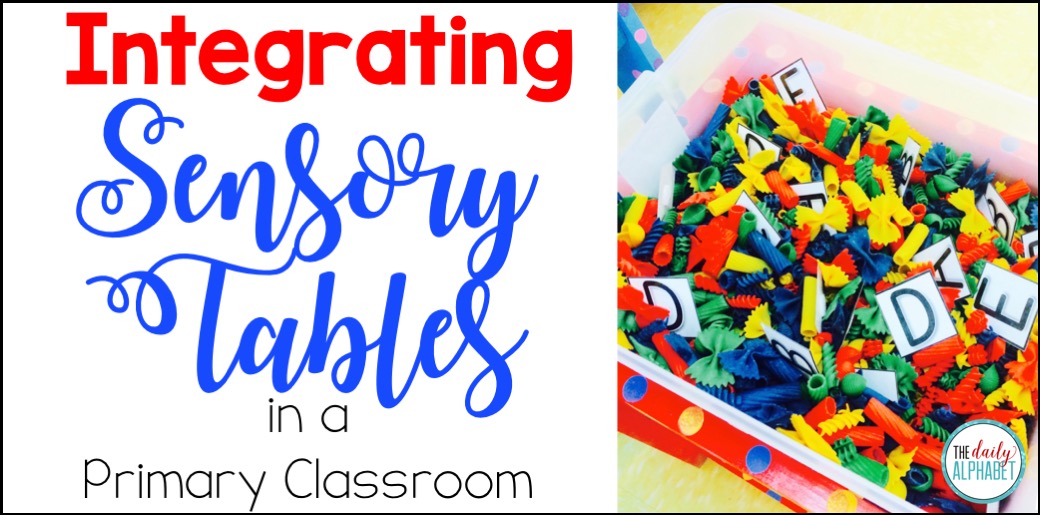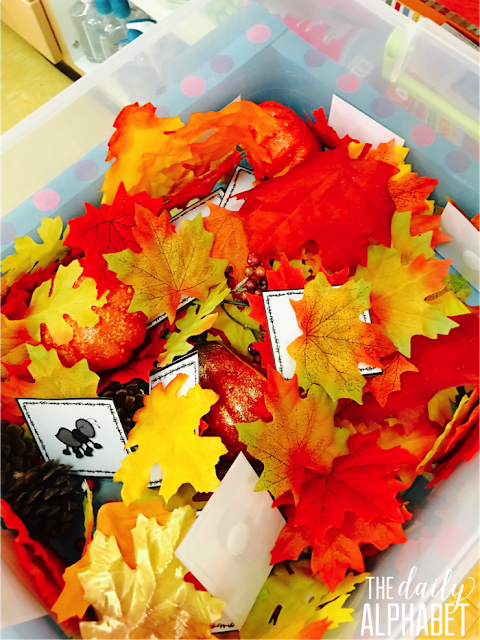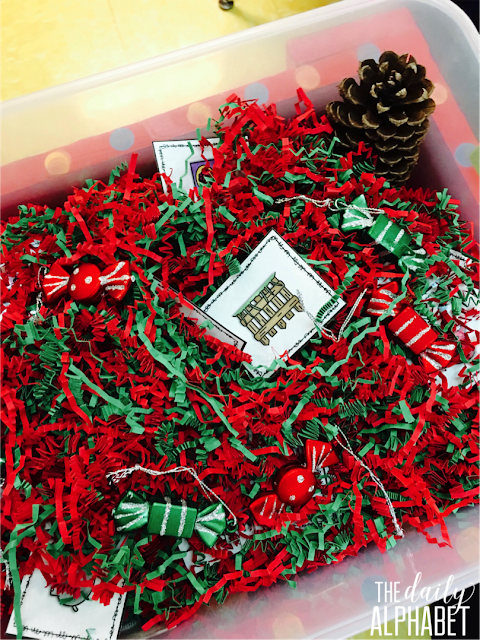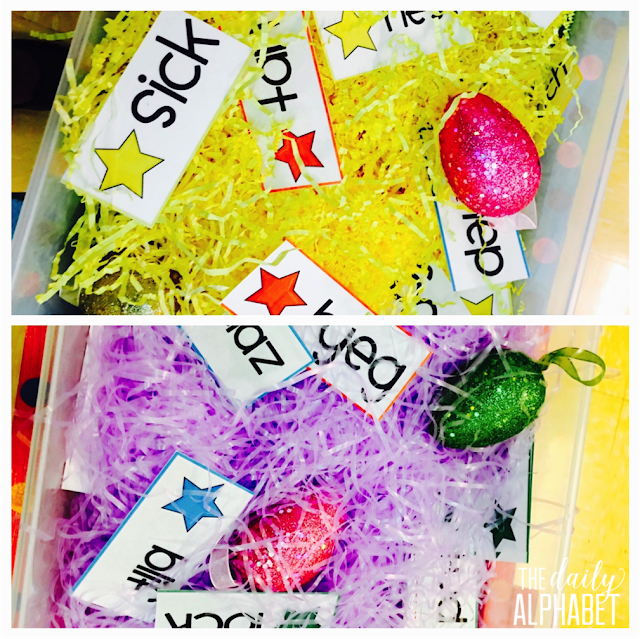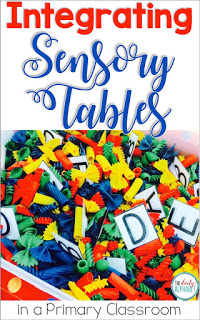Hey everyone, how’s it going?
I finally went up to my classroom to get it together
for the upcoming year, and I came across
all of my sensory table materials.
So I decided that I wanted have a chat about how I
integrated sensory tables into my center rotations.
If you missed the post on how I begin centers in general,
you can check it out !
Before we talk about how to integrate them into your center rotations,
I want to talk about why.
Why sensory tables?
Sensory tables are something that I have wanted to do
for several years now, and it took me a while to do some
research, and to think about how it would go in my classroom.
I wanted to be armed with research, because I wanted to know the ‘why’
behind what we were gong to do, and I wanted to be able to explain it
if someone higher up wanted to ask me about it.
Sensory play is anything that engages the five senses,
touch, taste, seeing, hearing, and feeling.
Children learn best when more of their senses are engaged,
and this is enhanced if these experiences are hands-on.
Sensory tables reach students who are tactile learners, as well as
those who are visual learners.
They also remember more of what they learn with their senses.
While your students are exploring and having fun,
they are also learning in many different ways.
Let’s take a look at some of them!
Creative Development
First and foremost, there is room for creative development. Sometimes the
curriculum that we follow seems to not provide an opportunity for this.
As primary teachers, we know that this is extremely important!
At this age, children learn through play!! Yes!!
I know, you already know this, we just need to keep telling everyone else!
Language Development
Each time a student comes to the sensory table, they will use
all of the materials there in a different way.
If students in a group don’t have a shared background story,
it gives them some common ground to stand on.
I was amazed at the conversations that I would overhear
from the sensory table!
Physical Development
Sensory tables are a great center in which students can
manipulate the materials and practice their fine motor skills!
They learn control over their motor skills, which is so
important for zipping zippers, tying shoes, handwriting, etc.
Social & Emotional Development
This is another piece of early childhood that current
curriculum trends tend to ignore.
They learn to cooperate with their peers and they learn to
listen to someone else’s point of view, even if they don’t agree with it.
It is during this type of learning that self-discovery occurs.
They become able to express themselves,
and share what they have learned.
Cognitive Development
Last, but certainly not least, is cognitive development.
Students are able to make decisions, and feel good about them.
They are able to problem solve, and begin to analyze different things.
So, you’ve said yes to a sensory table! Congratulations!
Now how do you go about integrating it into your center rotation?
It’s definitely not a decision to be taken lightly, because if it’s
implemented quickly or haphazardly, then disaster is coming!
I definitely do not begin with teaching this center.
I begin by teaching the basic centers first.
When I feel that they’re ready, then I move towards this center.
I decided for our first foray into sensory tables, I wanted to begin
with something that would be super easy to clean up.
So that means no rice. Let me repeat myself……
Do NOT begin sensory tables with rice!
It will get everywhere, and it will encourage you to abandon
sensory tables altogether. Don’t do it!
I like to begin with noodles! They’re pretty big, and they’re
super easy to clean up. And we stick with the noodles during what
I like to call the training phase.
Just as you have to be extremely diligent when teaching center
routines and procedures, you have to do the same thing,
even more so, when you’re teaching this center.
We talk about how the materials don’t belong in our mouths,
even though some of it is real food, we can’t eat it!
We talk about how the sensory materials are pretty,
but they also do not belong in our pockets, we cannot
take them home, as much as we want to!
Once we have the routines and procedures down, and we’re past the
stage of wanting to them in our mouths, and we’re picking
up material from the floor, then I begin switching out materials.
Now, don’t worry if you don’t have enough sensory materials
for the entire year. Neither did I. Whenever I didn’t have themed
sensory materials, I pulled the noodles back out.
My goal this year is to fill in what I didn’t have the year before.
What I also love about sensory tables in Kindergarten, is that you
can use center materials that you were already using!
No reinventing the wheel!
My fave things to use in this center is anything that is a mat
from my friend Vickie Plant.
This includes her phonics mats, and her ABC Visual Discrimination Mats!!
Sometimes we don’t get the chance to give a review of what goes on in our
classrooms. You may get get visitors in your room during a walk-through
and/or observation. I keep this sign around my sensory tables, so that when
someone walks in, they know exactly what they are doing in the center.
You can grab this freebie by clicking here or on the picture below!
If you want to know more about dyeing sensory materials,
and , click the links!
I hope that your endeavor into sensory tables turn out great!







